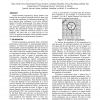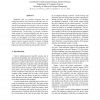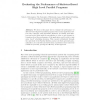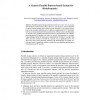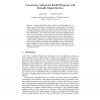IPPS
2002
IEEE
15 years 10 days ago
2002
IEEE
Object-oriented programming, design patterns, and frameworks are common techniques that have been used to reduce the complexity of sequential programming. We have applied these te...
CCGRID
2002
IEEE
15 years 11 days ago
2002
IEEE
Malleable jobs are parallel programs that can change the number of processors on which they are executing at run time in response to an external command. One of the advantages of ...
IPPS
2003
IEEE
15 years 21 days ago
2003
IEEE
SBT is portable library and tool for on-line debugging and performance monitoring of shared-memory parallel programs using the single-program-multiple-data (SPMD) model of paralle...
VECPAR
2004
Springer
15 years 23 days ago
2004
Springer
In this work we investigate how the compiler technique of message strip mining performs in practice on contemporary high performance networks. Message strip mining attempts to redu...
ICCS
2004
Springer
15 years 24 days ago
2004
Springer
We show in this paper how to evaluate the performance of skeleton-based high level parallel programs. Since many applications follow some commonly used algorithmic skeletons, we id...
EUROPAR
2004
Springer
15 years 24 days ago
2004
Springer
Abstract. Parallel program design patterns provide users a new way to get parallel programs without much effort. However, it is always a serious limitation for most existing parall...
CONCUR
2004
Springer
15 years 24 days ago
2004
Springer
We present a trace semantics for a language of parallel programs which share access to mutable data. We introduce a resource-sensitive logic for partial correctness, based on a re...
LCPC
2005
Springer
15 years 27 days ago
2005
Springer
Abstract. A fundamental problem in the analysis of parallel programs is to determine when two statements in a program may run concurrently. This analysis is the parallel analog to ...
ISPAN
2005
IEEE
15 years 1 months ago
2005
IEEE
A semi-dynamic system is presented that is capable of predicting the performance of parallel programs at runtime. The functionality given by the system allows for efficient handl...
IEEEPACT
2005
IEEE
15 years 1 months ago
2005
IEEE
Transactional Coherence and Consistency (TCC) is a novel coherence scheme for shared memory multiprocessors that uses programmer-defined transactions as the fundamental unit of p...
